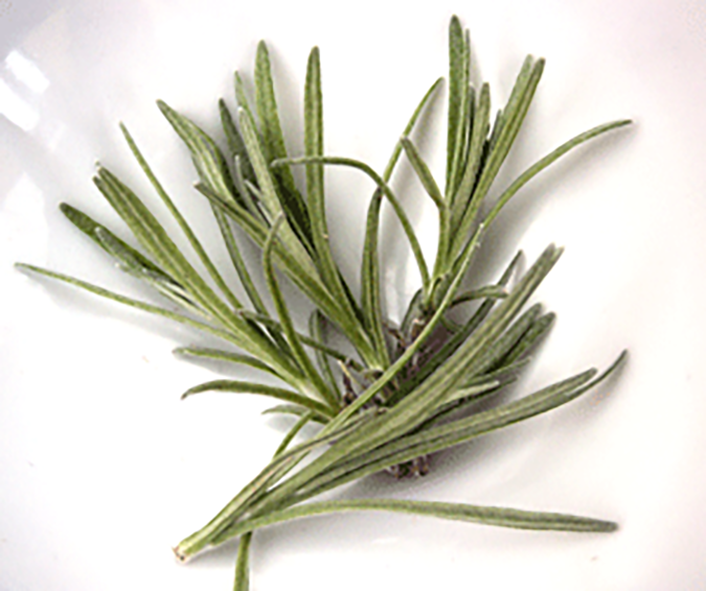 Sprig of curry plant
Helichrysum
italicum
leaves..
Sprig of curry plant
Helichrysum
italicum
leaves..
Welcome to the summary page for FabulousFusionFood's Herb guide to Curry Plant along with all the Curry Plant containing recipes presented on this site, with 0 recipes in total.
e This is a continuation of an entire series of pages that will, I hope, allow my visitors to better navigate this site. As well as displaying recipes by name, country and region of origin I am now planning a whole series of pages where recipes can be located by meal type and main ingredient. This page gives a listing of all the Cornish recipes added to this site.
These recipes, all contain Curry Plant as a major herb flavouring.
The Curry Plant, Helichrysum italicum is a flowering plant belonging to the Asteraceae, or daisy, family. It is a hardy plant that originates from the Mediterranean and is frost-resistant. It has a shrubby aspect with silvery leaves and grows to about 60cm high and 1m in diameter. The leaves contains a high proportion of sotolone and it is this that lends them their distinctive curry-like aroma and which gives the plant its name.
The leaves are best used fresh in salads as tend not to impart their curry-like flavour well to other foods. Despite this the curry flavour of the leaves develops if the leaves are bruised and it is possible to use them in a curry if a large bunch of leaves are pulverized with garlic in a pestle and mortar or if they are blended to a paste with garlic, chillies and oil in a blender. An essential oil extracted from the flowers used as a flavouring to enhance fruit flavours in sweets, ice cream, baked goods, soft drinks and chewing gum and the dried flower heads can also be used to make a herbal tea.
Indeed, once cooked the leaves quickly loose their curry scent and tend to smell rather like fresh-cut grass but with a bitter overtone. It is best used as a flavouring for seamed fish (add a few sprigs and remove them), as a component for marinading beef prior to barbecuing, or as an additive to salads. It does have an affinity for cream cheese and a little chopped Helichrisum leaves mixed with cream cheese makes and excellent sandwich spread. If bruised before use, the leaves will impart their flavour to oils. Take a couple of sprigs, bruise the leaves then fry with onions to give them flavour (remove and discard the sprigs afterwards), or, if you like a certain bitterness in your foods, chop and bruise the leaves then include with the onions.
e This is a continuation of an entire series of pages that will, I hope, allow my visitors to better navigate this site. As well as displaying recipes by name, country and region of origin I am now planning a whole series of pages where recipes can be located by meal type and main ingredient. This page gives a listing of all the Cornish recipes added to this site.
These recipes, all contain Curry Plant as a major herb flavouring.
The Curry Plant, Helichrysum italicum is a flowering plant belonging to the Asteraceae, or daisy, family. It is a hardy plant that originates from the Mediterranean and is frost-resistant. It has a shrubby aspect with silvery leaves and grows to about 60cm high and 1m in diameter. The leaves contains a high proportion of sotolone and it is this that lends them their distinctive curry-like aroma and which gives the plant its name.
The leaves are best used fresh in salads as tend not to impart their curry-like flavour well to other foods. Despite this the curry flavour of the leaves develops if the leaves are bruised and it is possible to use them in a curry if a large bunch of leaves are pulverized with garlic in a pestle and mortar or if they are blended to a paste with garlic, chillies and oil in a blender. An essential oil extracted from the flowers used as a flavouring to enhance fruit flavours in sweets, ice cream, baked goods, soft drinks and chewing gum and the dried flower heads can also be used to make a herbal tea.
Indeed, once cooked the leaves quickly loose their curry scent and tend to smell rather like fresh-cut grass but with a bitter overtone. It is best used as a flavouring for seamed fish (add a few sprigs and remove them), as a component for marinading beef prior to barbecuing, or as an additive to salads. It does have an affinity for cream cheese and a little chopped Helichrisum leaves mixed with cream cheese makes and excellent sandwich spread. If bruised before use, the leaves will impart their flavour to oils. Take a couple of sprigs, bruise the leaves then fry with onions to give them flavour (remove and discard the sprigs afterwards), or, if you like a certain bitterness in your foods, chop and bruise the leaves then include with the onions.
The alphabetical list of all Curry Plant recipes on this site follows, (limited to 100 recipes per page). There are 0 recipes in total:
Page 1 of 1
Page 1 of 1